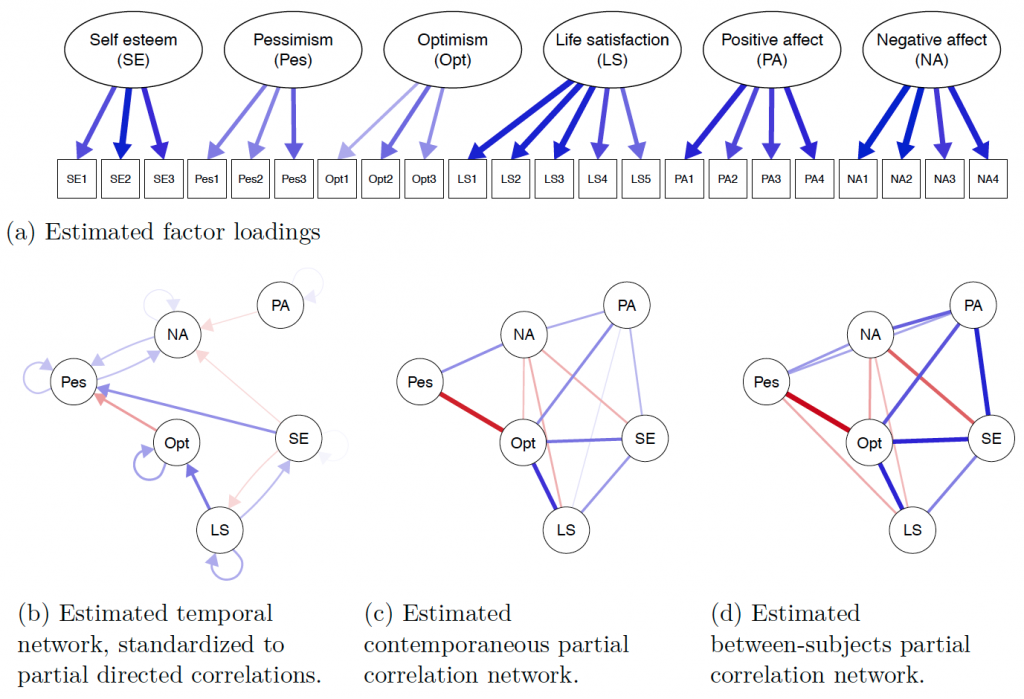Version 0.3.2 of psychonetrics is now on CRAN! This means that the package can now be installed easily from R and that the automatically generated manual is online. For more notes on how to install psychonetrics, please see the installation guide on this website. Note that this page also explains how to install version 0.3.3 (the only difference is that the prune function also removes autoregressions in 0.3.3).
In preparation of the CRAN release, I have documented all functions currently used in the package. The overview page on this website gives an overview of these functions and the estimation methods currently available. Finally, I added a few more recourses to the resources page, including an example of estimating a graphical vector auto-regression (gvar) model from panel data.
Finally, I have uploaded the first preprint that describes some of the functionality of this package. The preprint concerns the estimation of gvar models between latent variables from time-series (n=1 measured on many repeated occasions) and panel data (high n measured on a few repeated occasions). The encompassing framework is entitled lvgvar, the framework for time-series analysis ts-lvgvar and the framework for panel data panel-lvgvar. The preprint has been submitted for publication to Psychometrika.

The preprint discusses the differences between time-series data and cross-sectional/panel data in depth. Most importantly, in time-series a model aims to explain variation over time being random, whereas in cross-sectional and panel a model aims to explain variation over people being random. This is crucially different. The preprint explains that cross-sectional data analysis cannot separate within- and between-person variances, but that in panel data you can make some distinction between these two. Most notably, you can obtain the fixed effect structure of within-person variation, under assumption of stationarity. The preprint further proves the requirements for ergodicity (in which cross-sectional results would completely equal within-person results), and discusses the interpretation of within- and between-person effects given the chosen length of measurement and lag-interval.
I am very curious to see applications from these methods (I saw some nice results already in our latest summer school) and would be very happy for any feedback on the preprint or the package (please submit issues on Github)!
But first… time for a holiday!

